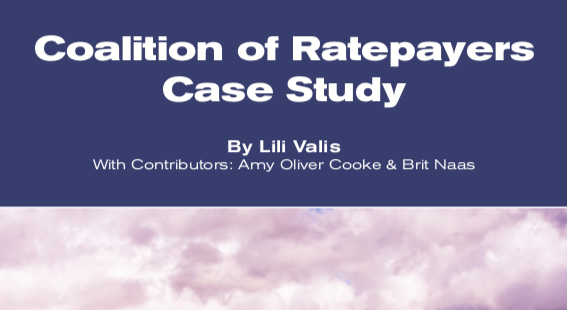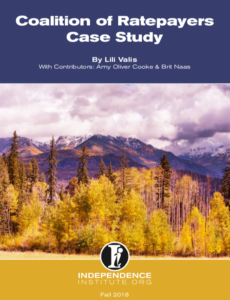The Coalition of Ratepayers is a Colorado non-profit composed of small businesses and individuals. It has been an active party in two electric utility regulatory proceedings: the Rush Creek Wind Farm and the Colorado Energy Plan (CEP).
The Coalition first intervened against the Rush Creek Wind Farm, and although the Public Utilities Commission (PUC) approved it, the Coalition’s involvement in that case as a PUC recognized party helped set it up to participate in the Colorado Energy Plan (CEP) proceeding, which was larger and more impactful.
The following study discusses the Coalition and its work in the regulatory sphere, pertaining mainly to the Colorado Energy Plan but also touching on its participation in the Rush Creek Wind Farm case. It also suggests ways to reform the Public Utilities Commission and discloses an avenue the Coalition is exploring that will make intervening more feasible.
As is stated in the report, “Participating in public utility proceedings is not for the faint of heart.” There are many hurdles any party has to contend with, and for new participants, those hurdles seem much higher. As a relatively new party, this was true for the Coalition of Ratepayers, and at the beginning of the CEP, most parties derided and thought very little of it. However, by the end, the Coalition had become Xcel’s chief opponent. Its legal team was exceptional, and its expert witness was fantastic, revealing $87 million worth of errors in Xcel’s modeling and accounting. By the Commissioner’s own statements, the Coalition of Ratepayers had provided much to the proceeding.
The Public Utilities Commission ultimately approved the CEP, but the Coalition was able to disprove Xcel’s claims that it was a money saving plan.
Therefore, while it may be difficult to participate in regulatory proceedings and combat the ever-encroaching bureaucracy, it is essential. We hope our case study can be a resource to groups that go against Colorado’s or any state’s regulatory regime.









